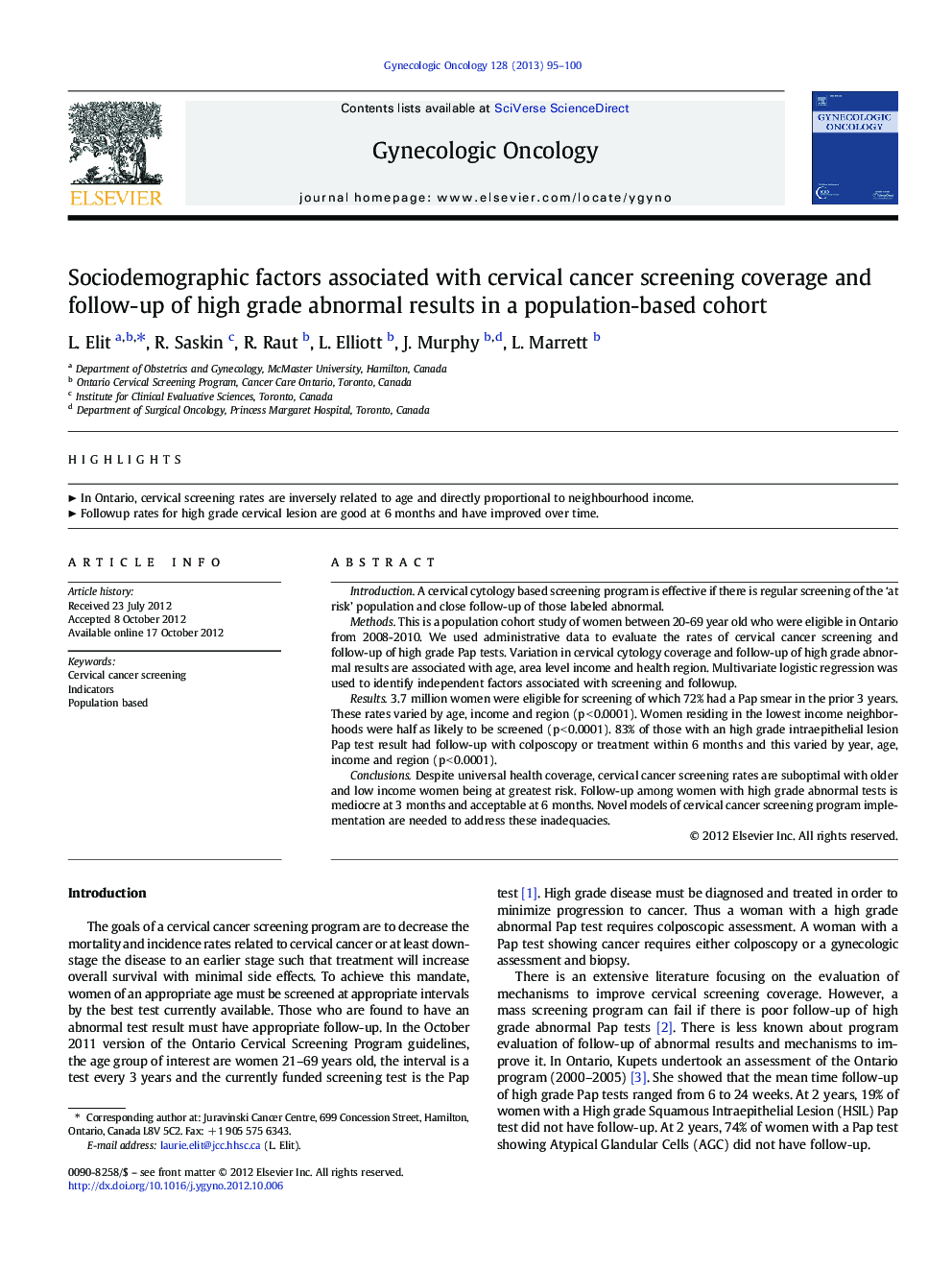| Article ID | Journal | Published Year | Pages | File Type |
|---|---|---|---|---|
| 3942859 | Gynecologic Oncology | 2013 | 6 Pages |
IntroductionA cervical cytology based screening program is effective if there is regular screening of the ‘at risk’ population and close follow-up of those labeled abnormal.MethodsThis is a population cohort study of women between 20-69 year old who were eligible in Ontario from 2008-2010. We used administrative data to evaluate the rates of cervical cancer screening and follow-up of high grade Pap tests. Variation in cervical cytology coverage and follow-up of high grade abnormal results are associated with age, area level income and health region. Multivariate logistic regression was used to identify independent factors associated with screening and followup.Results3.7 million women were eligible for screening of which 72% had a Pap smear in the prior 3 years. These rates varied by age, income and region (p < 0.0001). Women residing in the lowest income neighborhoods were half as likely to be screened (p < 0.0001). 83% of those with an high grade intraepithelial lesion Pap test result had follow-up with colposcopy or treatment within 6 months and this varied by year, age, income and region (p < 0.0001).ConclusionsDespite universal health coverage, cervical cancer screening rates are suboptimal with older and low income women being at greatest risk. Follow-up among women with high grade abnormal tests is mediocre at 3 months and acceptable at 6 months. Novel models of cervical cancer screening program implementation are needed to address these inadequacies.
► In Ontario, cervical screening rates are inversely related to age and directly proportional to neighbourhood income. ► Followup rates for high grade cervical lesion are good at 6 months and have improved over time.
